Stogie Spirits: Canadian Club Classic 12 Year Old
22 Apr 2009
“Damn right your dad drank it.” That’s the on-the-mark tagline of Canadian Club whiskey, a spirit everyone’s heard of but seemingly few under 40 have tried.
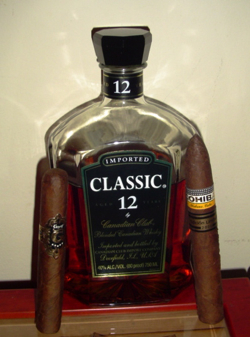 Before this review I had tried the original Canadian Club, a six year whiskey, but not its more mature sibling, the Canadian Club Classic 12 Year Old. This whiskey is aged 12 years in re-charred oak barrels and created with corn and rye, combined with rye malt and barley malt.
Before this review I had tried the original Canadian Club, a six year whiskey, but not its more mature sibling, the Canadian Club Classic 12 Year Old. This whiskey is aged 12 years in re-charred oak barrels and created with corn and rye, combined with rye malt and barley malt.
The resulting spirit has a vibrant orange-bronze color. On the nose the Canadian Club Classic is soft with a creamy sherry aroma reminiscent of eggnog.
When I got down to tasting, I found a smooth body with cream, vanilla, bread, and oak. It reminded me of some of my favorite American ryes—not surprising considering that Canadian whiskey is traditionally made with a high percentage of rye. In addition, there is a subtle woody spice and the finish is dry and smooth.
With it’s vanilla, cream, and woody flavors, there is plenty to pair up with a fine cigar. I’d recommend the Arganese Edición Especial 2008, Isla de Cuba Classic, EO Cubao, Oliva Series G, or Romeo y Julieta Vintage, all which have prominent cream or cedar notes. If you’re enjoying this whiskey in Canada, or some other country where Cuban cigars are widely available, I’d suggest a lesser known Cuban smoke: the Por Larrañaga Panatela.
All in all, I was quite impressed with the Canadian Club Classic. Canadian whiskey is often overshadowed by the fine bourbon and scotch being produced, but this representation shows that Candian whiskey can also be a great sipping spirit.
Given that a bottle is a reasonable $25, it won’t be devastating if someone uses it to make a cocktail. In fact, I bet the Canadian Club Classic 12 Year Old would make an excellent Manhattan. Personally, though, I’d take it neat.
photo credit: Stogie Guys

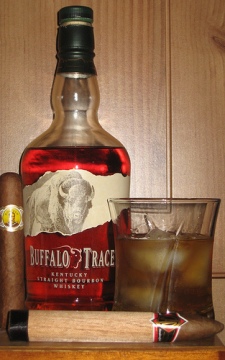 Built on the banks of the Kentucky River near Frankfort, the distillery, according to its
Built on the banks of the Kentucky River near Frankfort, the distillery, according to its 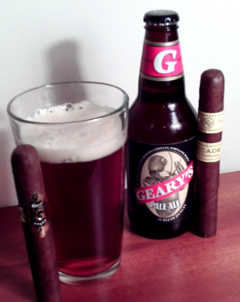 With that in mind, I popped open a few bottles of Geary’s Pale Ale to see if it had the type of flavor that would pair well with beer. Geary’s is brewed in Portland, Maine, and is widely available in New England. Elsewhere Geary’s is tougher to find, so when I found it at a Total Wine here in Northern Virginia I grabbed a six-pack.
With that in mind, I popped open a few bottles of Geary’s Pale Ale to see if it had the type of flavor that would pair well with beer. Geary’s is brewed in Portland, Maine, and is widely available in New England. Elsewhere Geary’s is tougher to find, so when I found it at a Total Wine here in Northern Virginia I grabbed a six-pack.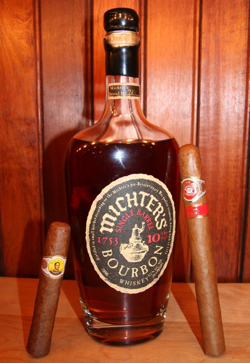 Just because this bourbon isn’t made at the historic Pennsylvania distillery doesn’t mean it isn’t a great spirit. But the fact that bourbon was made in Pennsylvania does let me address one common misconception: Contrary to what you might have heard (and what a friendly bartender recently tried to convince me of), bourbon doesn’t need to made in Kentucky.
Just because this bourbon isn’t made at the historic Pennsylvania distillery doesn’t mean it isn’t a great spirit. But the fact that bourbon was made in Pennsylvania does let me address one common misconception: Contrary to what you might have heard (and what a friendly bartender recently tried to convince me of), bourbon doesn’t need to made in Kentucky.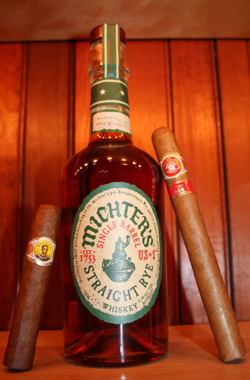 This Stogie Spirit article is of one of those post-Schaefferstown Michter’s whiskeys. It’s called
This Stogie Spirit article is of one of those post-Schaefferstown Michter’s whiskeys. It’s called 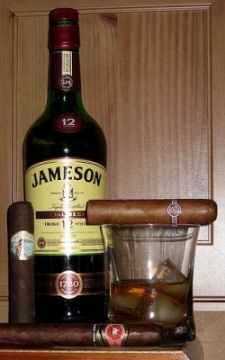 The 12 Year Old blend is a fine choice if you want to venture away from the traditional recipe but don’t want to break the bank. One of four blends in Jameson’s
The 12 Year Old blend is a fine choice if you want to venture away from the traditional recipe but don’t want to break the bank. One of four blends in Jameson’s 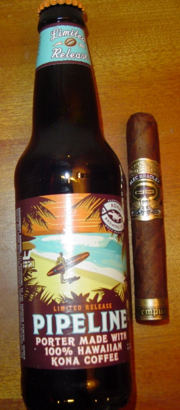 I’ve previously tried Kona’s flagship beer, the
I’ve previously tried Kona’s flagship beer, the  Patrick Ashby
Co-Founder & Editor in Chief
Patrick Ashby
Co-Founder & Editor in Chief Patrick Semmens
Co-Founder & Publisher
Patrick Semmens
Co-Founder & Publisher George Edmonson
Tampa Bureau Chief
George Edmonson
Tampa Bureau Chief